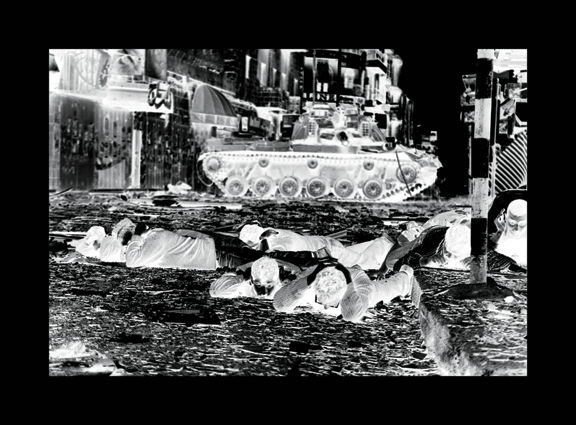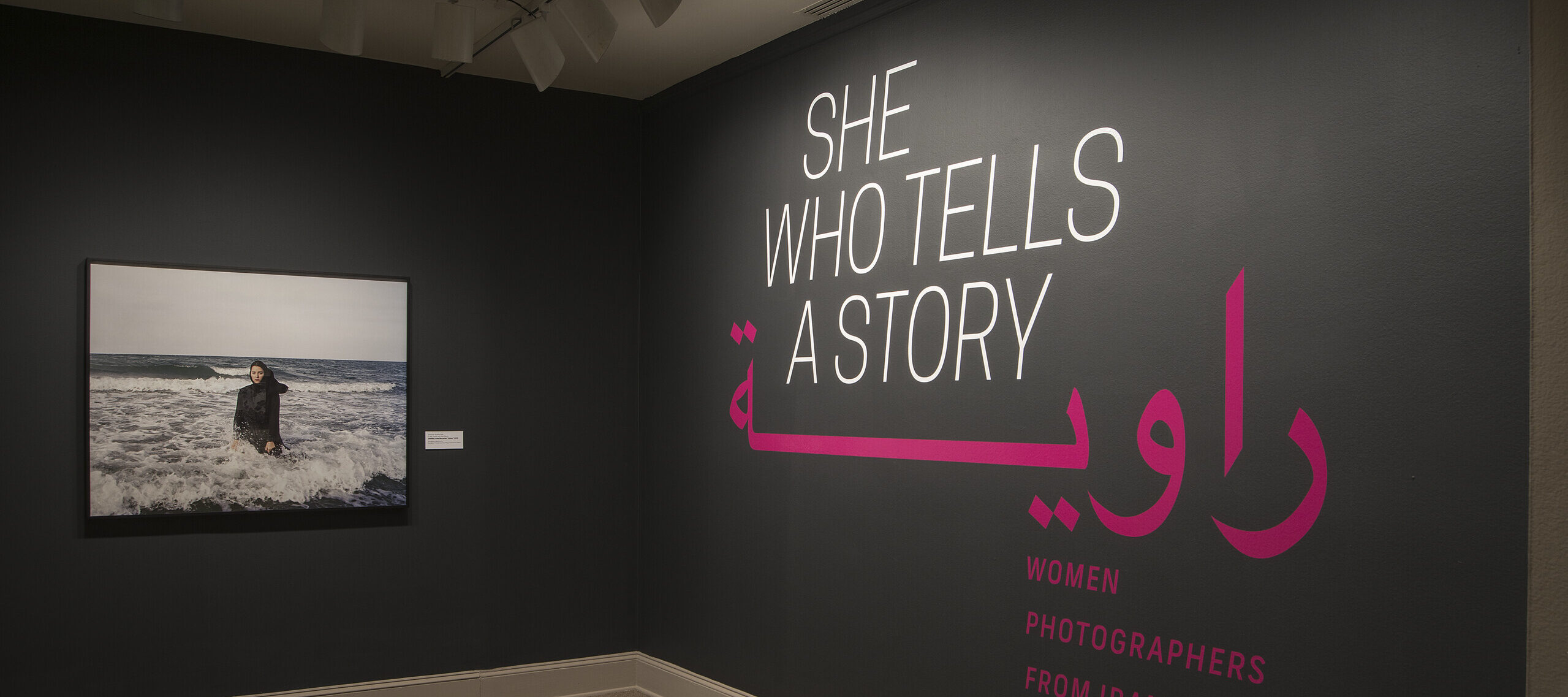NMWA’s summer exhibition She Who Tells a Story: Women Photographers from Iran and the Arab World is organized around three themes: New Documentary, Constructing Identities, and Deconstructing Orientalism.
She Who Tells a Story artists use artistic and documentary techniques to both depict experiences and address concerns about the medium of photography. Through staging, editing, and other manipulations, artists like Gohar Dashti and Rula Halawani question the objectivity of the photograph while expressing deeper truths about their subjects.
The Legacy of War
Gohar Dashti’s series “Today’s Life and War” shows the everyday activities of a couple in a fictionalized battlefield. Dashti, who grew up during the Iran-Iraq war (1980–88), says that her series “represents war and its heritage, how it permeates all aspects of contemporary society.” Concerned with capturing moments that ”reference the ongoing duality of life and war without precluding hope,” Dashti’s staged photographs convey the legacy of war.

Untitled #2 depicts a female figure hanging white cloths over barbed wire. In the blurred background, viewers can detect a male figure and military vehicles. The scene’s strange, dramatic elements emphasize its artificiality. Dashti’s photograph symbolizes the presence of war in everyday life rather than depicting real events. The barbed wire enclosure evokes borders and restriction, while the act of hanging white cloths suggests both mundane tasks like laundry and a longing for peace.
Violence and Erasure
“Negative Incursions” was Rula Halawani’s first artistic project after she left the field of photojournalism. A Palestinian living in East Jerusalem, the artist captured these images during the 2002 Israeli incursion into the West Bank. Rather than produce standard journalistic images, Halawani enlarged the negatives and printed them with a thick black border.

Her use of negatives suggests military imagery and draws attention to the technical processes of photography. “Negative Incursions” acknowledges the bias of all representations, even photographs, and encourages viewers to look for distortions elsewhere. Thick black borders framing the images—reminiscent of a television screen—echo this by critiquing media bias and inattention to Palestinian suffering.
Halawani’s technique also encourages viewers to approach these scenes from a fresh perspective, eliciting new responses from audiences whose exposure to the conflict has been oversaturated with graphic images of war and violence. Her disorienting negative images draw the viewer into an alien landscape, prompting shock and horror upon closer inspection. Not only a document of real events, Halawani’s series represents a collective experience of suffering, the subjectivity of the medium of photography, and the “negation of [Palestinian] reality” by military violence and media indifference.
New Stories
Dashti and Halawani both document their own experiences and the collective experience of their generation, community, or culture. Using art photography together with documentary techniques, they question the links between photojournalistic photography and a single, objective truth. Their creative interventions infuse their works with meaning and challenge the neutrality of mainstream narratives, making room for other stories to be told.
